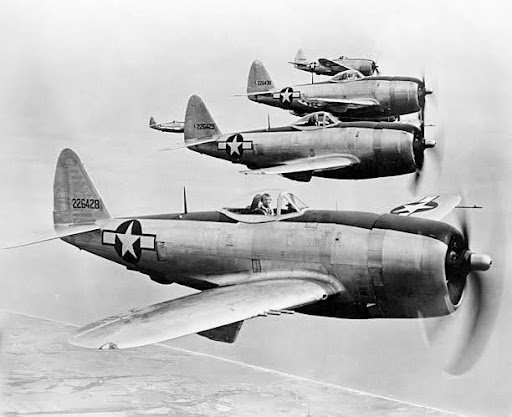Kansas has long been a hub for aviation history, from the early days of Cessna, Beechcraft, and Boeing to the pioneers who leveraged aviation to take business operations to new heights and glory.
Among those pioneers was Ray E. “Ace” Dillon Jr., known for his leadership in business and corporate aviation expansion in the heartland. His journey started as a WWII fighter pilot and later involved revolutionizing how Dillon Companies operated through its flight department. Let’s discuss his contributions in detail.
From War Hero to Business Aviation Mogul
Ace Dillon made history in Europe’s skies before taking charge of the Dillon Companies’ flight operations. As a 1st Lieutenant in the U.S. Army Air Corps, Ace flew 92 combat missions in the Republic P-47 Thunderbolt fighter during World War II. His courage and skill earned him the Distinguished Flying Cross and the Air Medal with twelve clusters.
But for Ace, this was the beginning of something greater. After his homecoming, Ace recognized that aviation could be the key to revolutionizing Dillon Companies’ reach across Kansas and beyond.
The Birth of Dillon Companies’ Flight Department
For Ace, airplanes were “time machines,” allowing executives to travel quickly between store locations, suppliers, and business meetings.
Initially, Ace rented aircraft from Wells, Yingling, and United Beechcraft in Wichita. Soon, the company took ownership of its first aircraft, a Beechcraft Bonanza, in the late 1940s. From there, the Dillon Companies Flight Department expanded significantly, acquiring larger, faster, and more advanced aircraft to meet the demands of a rapidly growing business.
Growth and Innovation in Corporate Aviation
Throughout the 1950s and 1960s, as Dillon Companies expanded its grocery empire, so did its corporate aviation program. With Ace at the controls, the company added twin-engine aircraft like the Beechcraft Model 18, the Lockheed Lodestar, and later, the mighty Howard 500, a high-performance business aircraft.
The Howard 500, in particular, symbolized the peak of business aviation for Dillon Companies. A product of Dee Howard’s engineering brilliance, the Howard 500 was pressurized, fast, and luxurious, capable of comfortably flying executives across the country. It became the ultimate business tool for a company that valued efficiency and mobility.
Kansas as a Business Aviation Powerhouse
Ace Dillon’s impact extended beyond Dillon Companies. His leadership and key players like William “Bill” Haines made Kansas a center for corporate aviation. Based at Hutchinson Municipal Airport, Wells Aircraft became a key player in business aviation, selling and maintaining aircraft for various corporate clients.
Dillon Companies’ aviation operations were a microcosm of Kansas’s broader role in business aviation. The state, home to Beechcraft and Cessna, became synonymous with corporate flight departments, setting the stage for modern business aviation practices.
Legacy and Influence
Ace Dillon continued to fly into his 70s. His efforts paved the way for corporate aviation as we know it today, demonstrating that an efficient, well-run flight department could be a competitive advantage in business.
The Dillon Companies Flight Department remained vital to its operations until its merger with Kroger. At that point, its aviation assets were absorbed into the larger corporation. However, Ace Dillon’s legacy and pioneering vision for business aviation remain a testament to Kansas’s aviation heritage.
Ace’s story is an inspiration for generations to come. His courage and determination proved that business aviation is more than just transportation.
Want to learn more? Read The Dillon Companies Flight Department by Michael W. Sims today.



